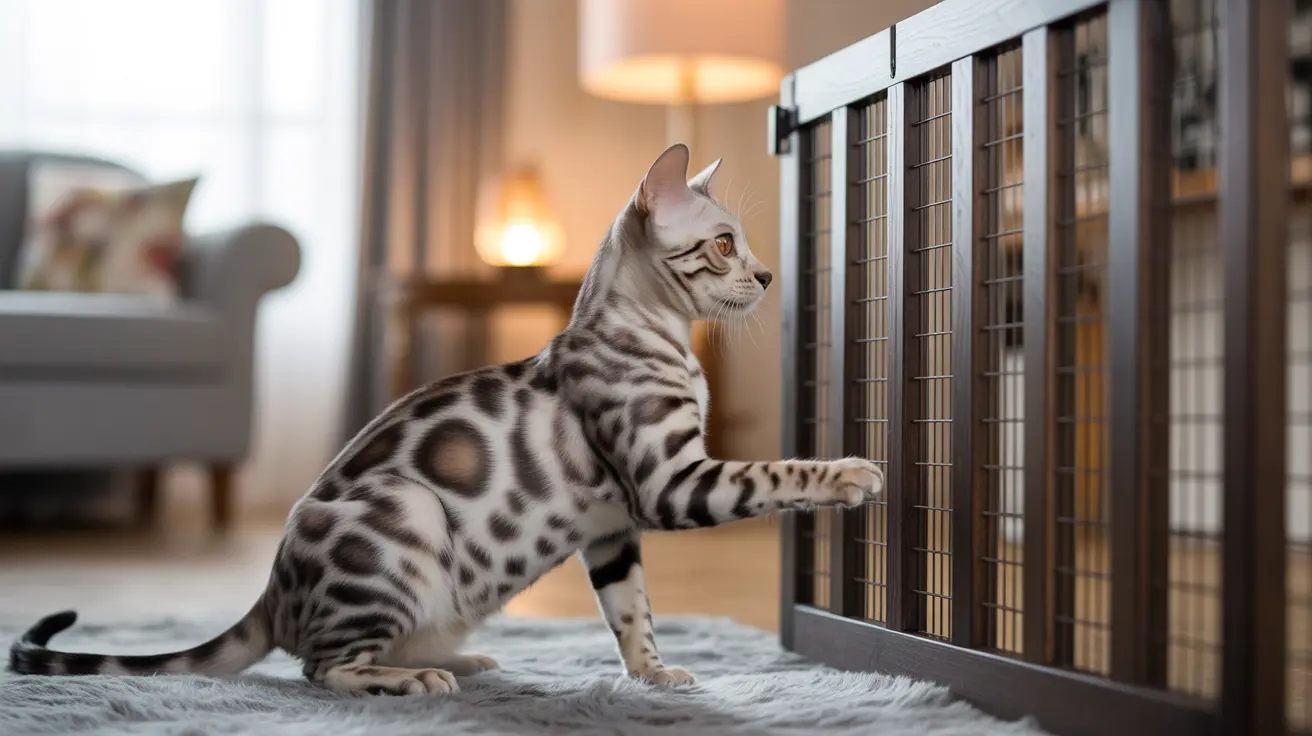Whether you need to protect valuable items, maintain a clean space, or ensure safety, keeping cats out of specific rooms can be challenging but achievable. This comprehensive guide explores proven methods to restrict cat access while maintaining a happy, enriched environment for your feline friend.
Understanding cat behavior and implementing the right combination of deterrents and alternatives is key to success. Let's explore effective strategies that work without causing stress or anxiety for your pet.
Physical Barriers: Your First Line of Defense
The most straightforward approach to keeping cats out of rooms starts with reliable physical barriers. Consistently closing doors is essential, but determined cats often need additional deterrents:
- Install tall pet gates specifically designed for cats
- Use door draft stoppers to prevent paw access underneath
- Consider microchip-activated pet doors for selective access
- Apply weatherstripping to eliminate gaps around door frames
Advanced Barrier Solutions
For particularly persistent cats, consider these enhanced barrier methods:
- Install automatic door closers to prevent accidental access
- Use reinforced mesh screens for ventilation without entry
- Apply double-sided tape near door frames
- Place motion-activated deterrent devices near entrances
Environmental Deterrents That Actually Work
Creating an unwelcoming environment near restricted areas can effectively discourage cats without causing distress:
- Spray pet-safe citrus-scented deterrents around doorways
- Place aluminum foil or plastic mats near entrance points
- Use commercial cat deterrent products designed for indoor use
- Install motion-activated air sprayers near doorways
Creating Positive Alternatives
The key to successful room restriction is providing engaging alternatives elsewhere:
- Set up climbing trees and scratching posts in permitted areas
- Create cozy window perches in approved rooms
- Provide interactive toys and puzzle feeders away from restricted zones
- Establish dedicated "cat zones" with premium features
Training and Behavioral Modification
Consistent training can help establish and maintain boundaries:
- Use positive reinforcement when cats respect boundaries
- Redirect attention to approved areas when they approach restricted rooms
- Establish routine play sessions in permitted spaces
- Maintain consistent rules among all household members
Frequently Asked Questions
What are the best physical barriers to keep a cat out of a specific room?
The most effective physical barriers include closed doors, tall pet gates, door draft stoppers, and microchip-activated pet doors. For additional security, consider installing automatic door closers and reinforced mesh screens.
How can I use behavioral strategies and enrichment to discourage my cat from entering certain rooms?
Combine positive reinforcement training with engaging alternatives in permitted areas. Create designated "cat zones" with climbing trees, scratching posts, and interactive toys. Reward your cat for staying in approved spaces.
Are there safe and effective deterrents I can apply near doorways to keep cats away?
Yes, safe deterrents include citrus-scented sprays, double-sided tape, aluminum foil, and motion-activated air sprayers. These create uncomfortable but harmless experiences that discourage cats from approaching restricted areas.
How do microchip-activated cat doors work to restrict room access in multi-pet homes?
Microchip-activated doors read your pets' existing microchips or special collar tags to allow selective access. They can be programmed to permit entry for specific pets while keeping others out.
What are common household hazards to consider when restricting cat access to certain rooms?
Key hazards include toxic plants, cleaning supplies, medications, loose cords, unstable furniture, and open windows. Ensure these dangers are properly secured or removed from any areas your cat might access.
Conclusion
Successfully keeping cats out of rooms requires a multi-faceted approach combining physical barriers, deterrents, and positive alternatives. By understanding your cat's behavior and implementing these strategies consistently, you can effectively maintain cat-free zones while ensuring your pet remains happy and enriched in permitted areas.






